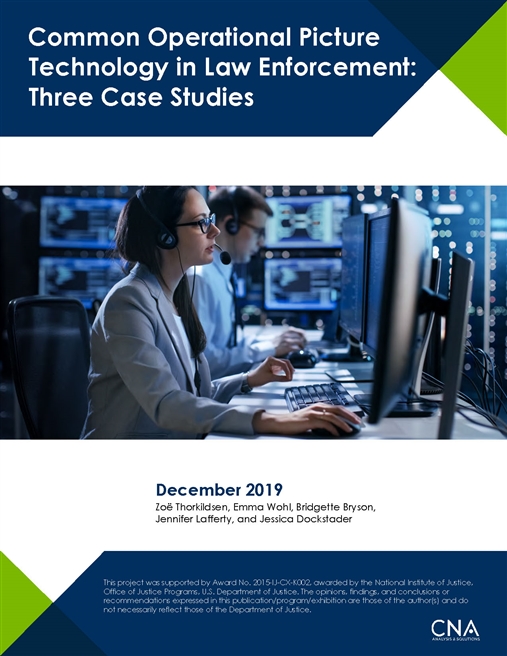Despite the documented importance of common operational picture (COP) technology in helping public safety response parties achieve situational awareness, little available research discusses which COP technologies are currently in use or the rationale for their adoption. The goal of this study was to collate examples of law enforcement implementation and use of COP technology, focusing on agencies with robust COP technology use. Practitioners will find this report useful for peer learning and to identify examples of challenges and paths to success based on the experiences of the three case study sites. Our primary research questions were: how have several law enforcement agencies implemented COP technology, and what can we learn from their experiences?
Although COP has many definitions, this report relies on the following definition developed with the National Institute of Justice: COP is a presentation of relevant information (e.g., the location and what is known about a criminal incident, the location and operationalstatus of an agency’s patrol units, theduty statusof officers) that is shared by the different components and levels of an agency or partnering agencies. COP technology gives law enforcement and public safety response partners the capacity to develop shared situational awareness during large- scale, serious, or critical incidents to support effective, efficient, and timely coordination and decision-making.
For this study, CNA conducted interviews across three locations: the Baton Rouge Police Department, Camden County Police Department, and Chicago Police Department. Although each police department incorporates COP technology in their jurisdictions in a unique way, common themes emerged regarding stakeholders, COP technology implementation, and the use of certain COP technology features. We explore these themes in detail in our cross-site analysis.
This study provides examples of current COP technology use in US law enforcement, and it identifies challenges and successes that other agencies may find useful to their own missions. However, additional research is needed. Researchers and practitioners mustfurtherstudy the efficacy of COP technology in achieving law enforcement goals, such as improving community response, reducing injuries, and preventing or reducing violent crime. Additionally, stakeholders, including law enforcement executives and personnel, researchers, and local government, must further study the COP technology features and implementation strategies that contribute to the successful use of COP technology and officer buy-in.
Download reportUnlimited distribution.
Details
- Pages: 44
- Document Number: irm-2019-u-022450-final
- Publication Date: 12/16/2019
